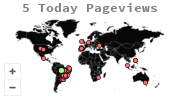IMAGEM DA POLÍCIA MILITAR DO RIO DE JANEIRO PELA ÓTICA DA CLASSE SOCIAL DOS CIDADÃOS PESQUISADOS
DOI:
https://doi.org/10.20946/rad.v10i2.2716Abstract
Este trabalho verifica empiricamente a existência de relação entre classe econômica e percepção sobre a imagem da polícia. Especificamente, o artigo apresenta quais fatores podem explicar a percepção da imagem da autoridade policial na cidade do Rio de Janeiro. Com base na utilização de dados secundários (RAMOS e MUSUMECI, 2005), foi realizado um recorte nos dados e aplicadas técnicas de Estatística Descritiva e Análise Fatorial para obtenção de interações e possíveis constructos na percepção da imagem da polícia na cidade do Rio de Janeiro pelos sujeitos da pesquisa (cidadãos de todas as classes sociais que mantiveram algum tipo de contato com a Polícia Militar do Rio de Janeiro). Assim, este estudo encontrou dois principais elementos que constroem a imagem da polícia percebida pela população carioca: (i) a imagem hostil da polícia e (ii) a imagem organizacional da polícia. Esses constructos permitiram a verificação empírica da imagem da polícia percebida pelas classes sociais. A principal contribuição deste artigo é evidenciar que tanto a classe baixa como a alta têm uma imagem negativa da polícia. Logo, não é a proximidade dos cidadãos de baixa renda com a Polícia Militar na cidade do Rio de Janeiro que influencia uma percepção negativa da imagem da polícia, uma vez que esses resultados também foram encontrados na classe alta.Metrics
Downloads
Published
How to Cite
Issue
Section
License
Authors who publish in this journal agree to the following terms:
1. Authors retain the copyright and grant the journal the right of first publication, with the work licensed simultaneously under a Creative Commons Attribution License after publication, allowing the sharing of work with acknowledgment of the authorship of the work and initial publication in this journal.
2. Authors are authorized to take additional contracts separately, for non-exclusive distribution of the version of the work published in this journal (eg publish in institutional repository or as a book chapter), with acknowledgment of authorship and initial publication in this journal.
3. Authors are allowed and encouraged to publish and distribute their work online (eg in institutional repositories or on their personal page) at any point before or during the editorial process, as this can generate productive changes, as well as increase the and the citation of the published work (See The Effect of Free Access).








